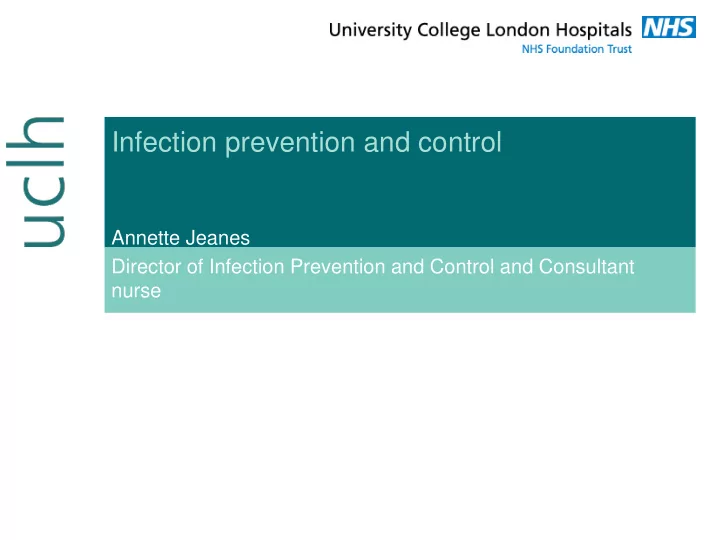

Infection prevention and control Annette Jeanes Director of Infection Prevention and Control and Consultant nurse
Summary History of infection prevention and control National issues UCLH Future
Infection Control
What is infection prevention and control? Prevention of acquisition and transmission of infection Detection and investigation including contact tracing Surveillance and monitoring Teaching and training Planning services and buildings Outbreak management and control Generating new knowledge Expert advice
Its not rocket science Hand hygiene Isolation of infectious patients Screening and monitoring Clean patient Clean environment Ventilation and water Immunisation Nutrition and hydration
What it isn't
9
10
11
Invisible support service Team including laboratories >40 new referrals to the reactive nurse desk each day On call service every day/24 hours/throughout the year Requests for information Reports and responses Meetings Contract tracing Investigations Staff are our main clients
National picture Legislation Regulation and monitoring Guidelines and standards Targets Reduction in MRSA bacteraemia Reduction in Clostridium difficile Ebola Influenza Antibiotic stewardship Carbapenem resistant organisms (CRO)
14
Current UCLH IPC challenges (examples) Vulnerable patients Fast throughput including day surgery Mixing of patient groups Patients and visitors travelling long distances Highly specialist services Getting the basics right Information Cleaning Isolation Invasive devices Hand hygiene
Healthcare associated infections 16
17
18
19
20
21
22
23
Human factors 24
25
The future Antibiotic resistance New micro-organisms particularly gram negatives and virus Increasing susceptibility particularly the very young and very old Staffing, training and knowledge Cleaning and disinfection Hand hygiene Involvement and engagement of patients and public
27
Recommend
More recommend